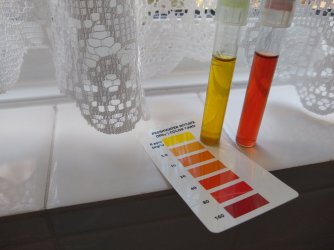Divinityinlove
Fish Crazy
What do you all think about this tank using no filter? when I see something like this, it brings up the question for me about water changes and gravel vac as well.
I do often wonder if doing weekly water changes and monthly gravel vacuuming is removing essential nutrients for my plants. Why remove the ammonia, nitrates and fish waste plants can utilize.. Then add fertilizers? Am I depriving my plants?
The stem plant (hygrophila) I have as my main plant in the tank, was growing surprisingly fast when first introduced to the tank, back then, I did monthly water changes and never gravel vacuumed as I was new to adopting this tank and didn't know much anyway.
Since I've started weekly changes and occasional gravel vac... This plant barely grows and in fact keeps losing lower leaves.
I know I've had discussions here about ferts before and I just found out API does an iron based one I will try...
But I want to hear all experiences, especially from anyone who's kept a tank without a filter. Do these plants do all the filtering necessary?
I do often wonder if doing weekly water changes and monthly gravel vacuuming is removing essential nutrients for my plants. Why remove the ammonia, nitrates and fish waste plants can utilize.. Then add fertilizers? Am I depriving my plants?
The stem plant (hygrophila) I have as my main plant in the tank, was growing surprisingly fast when first introduced to the tank, back then, I did monthly water changes and never gravel vacuumed as I was new to adopting this tank and didn't know much anyway.
Since I've started weekly changes and occasional gravel vac... This plant barely grows and in fact keeps losing lower leaves.
I know I've had discussions here about ferts before and I just found out API does an iron based one I will try...
But I want to hear all experiences, especially from anyone who's kept a tank without a filter. Do these plants do all the filtering necessary?



